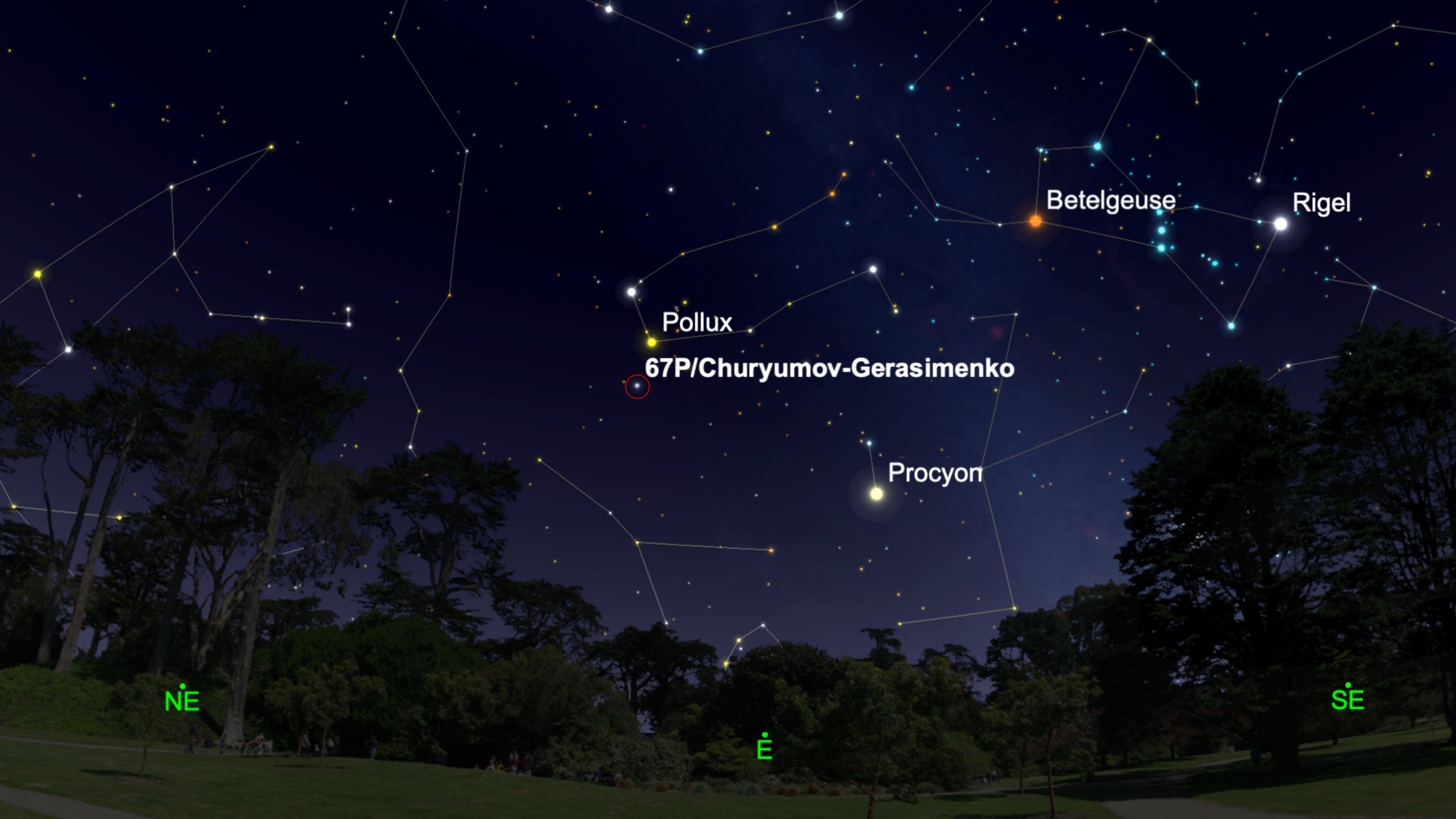Rosetta's 'rubber ducky' comet makes closest approach to Earth, will disappear for 200 years
The wonky-shaped Comet 67P made its closest approach to Earth on Friday (Nov. 12).

Comet 67P, which famously hosted the first-ever cometary lander in 2014, made its closest approach to Earth on Friday (Nov. 12). The comet, which is now bright enough to observe with amateur telescopes, will not come back to our planet for the next 200 years.
During its closest pass at 7:50 pm EST (0050 GMT), Comet 67P was at a distance of 39 million miles (62.8 million kilometres) from our planet, within the orbit of Mars, according to Astronomy Now.
Nine days earlier, the comet passed perihelion, the closest point to the sun in its elliptical orbit around our star. At this point, the comet was about 112 million miles (181 million km) from the sun.
Related: Europe's Rosetta comet mission in pictures
According to EarthSky, the comet's path, which sees it complete one orbit around the sun every six and a half years, will now start diverging from that of our planet, and the celestial snowball won't make another close pass until the year 2214. So, now is the best time for skywatchers to give it a shot and point their telescopes in the comet's direction. It can be found close to Pollux, the brightest star in the constellation Gemini, EarthSky said.
Comet 67P was thrust into the international media spotlight in 2014, when a European mission called Rosetta began orbiting the icy body after a 10-year journey through the solar system. Rosetta closely orbited the comet for more than two and a half years, having made detailed measurements and observations of the comet's surface and its immediate surroundings.

great to see #comet67P/C-G back in our skies this morning in #Gemini @BristolAstroSoc @markmccaughrean @mggtTaylor @StargazerRob @PeterLewis55 @DavidBflower @sjb_astro @xRMMike #comet pic.twitter.com/eR6SycajCtNovember 3, 2021
The hallmark of the mission was the landing of a smaller probe called Philae, which Rosetta had brought with it. The landing in December 2014 was the first ever on a comet, but it didn't go without a hitch. Upon the first touchdown, Philae bounced twice and ended up in a far less convenient location than the scientists picked for it. The mishap was later attributed to the failure of two harpoons that were designed to attach the lander to the comet upon first contact.
Sign up for the Live Science daily newsletter now
Get the world’s most fascinating discoveries delivered straight to your inbox.
Unfortunately, Philae settled under a cliff where its solar panels didn't see the sun. After two days, the probe ran out of power and fell asleep. It briefly woke up in June 2015 as the comet's angle towards the sun changed.
The mission of Rosetta and Philae make Comet 67P the best-studied comet of all. Scientists are still sifting through the treasure trove of data the mission provided.
At the end of its mission, the Rosetta orbiter crash-landed on the comet's surface, taking more up-close photographs and measurements. That means the duck-shaped snowball (the odd shape being one of the most famous discoveries of the mission) is now speeding away from the sun with two defunct human-made passengers aboard.
Follow Tereza Pultarova @TerezaPultarova. Follow us on Twitter @Spacedotcom and on Facebook.











